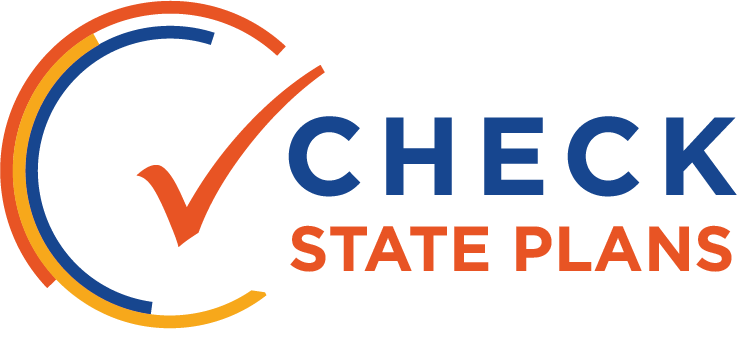
TENNESSEE
- Overview of Tennessee's Plan
- Equity
- Strengths
- Improvements
- Coherent and Aligned Vision for Improving Outcomes
- Strategic Use of Funding and Alignment of Resources
- Rigorous Review Process
- Continuous Improvement, Monitoring and Evaluation
- Evidence-Based Interventions
- Capacity Building and Autonomy
- Engagement
- Sustainability
Promise to Practice Overview
Equity
Tennessee has several strategies tied to equity, and it is clear that the state requires districts to rely on data, disaggregated by student groups, to identify needs, solutions and interventions. Additionally, their accountability system has consequences for schools that fail to make progress on closing achievement gaps. The state could still be more clear on how districts and schools should address equity in their school improvement applications.
Strengths
Tennessee provides a lot of guidance and information to districts, while still allowing them the flexibility to make decisions for their schools. The state’s resources are well crafted and have incorporated lessons learned from their previous school turnaround efforts.
Improvements
The complex nature of Tennessee’s approach to school improvement runs the danger of compliance being prioritized over quality implementation and could cause confusion among schools and districts.
Coherent and Aligned Vision for Improving Outcomes:
Strategic Use of Funding and Alignment of Resources:
Rigorous Review Process:
Continuous Improvement, Monitoring and Evaluation:
Evidence-Based Interventions:
Capacity Building and Autonomy:
Engagement:
Sustainability:
Click through the tabs on the left to see how Tennessee scored in each category.
Equity
How well does the state’s approach to school improvement include focused attention on supporting underserved students and closing the achievement gap? Does the state require LEAs to maintain an equity focus in their school improvement plans, activities and resource allocations?
One of Tennessee’s guiding principles is “all means all,” and the state’s ESSA plan includes several groups of strategies aligned to this principle such as, prioritizing talent management to ensure that students in low-performing schools have access to the best educators, safe and healthy learning environments, addressing bullying and harassment, and family resource centers. School improvement documents are not heavy with equity-oriented language, however it is clear that the state is requiring districts to rely on data, disaggregated by student groups, to identify needs, solutions and interventions. Tennessee’s accountability system has specific consequences for schools that fail to make progress on closing the achievement gaps. Still, the state could improve with a clearer equity strand throughout its school improvement application and guidance. States be specific about how they expect districts and schools to address the needs of subgroups of students when developing and implementing school improvement plans.
Strengths
How is the state thoughtfully leveraging ESSA’s flexibility to put in place the necessary policies and procedures that create an enabling environment for effective and sustained school improvement, and that consider state/local lessons learned from past efforts? What parts of the state’s turnaround strategy or guidance to LEAs were strongest or exemplary?
Tennessee seems to have done well balancing the need to set a theory of action and establish a set of guiding strategies, along with clear district guidance, with allowing districts flexibility to make decisions for their schools. There’s a lot of useful information that provides guidance while respecting the professional knowledge of district leaders.
The state’s school improvement materials in general are well crafted, with clear descriptions helping to establish expectations and guide districts and schools through the planning process. All materials focus on the state’s four levers of improvement, and the School Turnaround: An Evidence Guide is an excellent resource. It appears that Tennessee has been purposeful in carrying over some lessons learned from past accountability paradigms.
Improvements
How can the state improve its turnaround efforts? What parts of the state’s strategy or guidance to LEAs were unclear? What risks and challenges might the state face with its current approach?
There are many moving parts to Tennessee’s thoughtful, albeit complex, approach to accountability and school improvement. The state has used the experience from previous ESEA implementations to inform its approach, but nevertheless additional complexity runs the danger of compliance being prioritized over faithful implementation and a culture of improvement. Much time and energy will need to be devoted to ensuring that the field is able to use the tools for real school improvement. In referencing Tennessee’s school improvement documentation, it is hard to get a sense of the whole from the many pieces.
Tennessee use of dual accountability system raises issues with school improvement implementation as it can cause confusion about which schools are being identified and how to prioritize efforts.
Coherent and Aligned Vision for Improving Outcomes
How well does the state articulate a coherent vision or theory of action that drives their school improvement efforts? Is this vision aligned with the state’s accountability system and goals for closing the achievement gap?

Tennessee’s theory of action is clear and compelling, especially with regard to its four guiding principles, which are manageable and actionable. The theory of action is woven into the state’s school improvement application, and districts are required to address each guiding principle as part of a root cause analysis. All guidance documents provide practical statements about how the theory of action applies to what schools and districts should be doing; the four levers and emphasis on evidence-based strategies are what the state expect to drive implementation. Also encouraging is that it appears that the theory of action draws from lessons learned in implementing Tennessee’s Achievement School District.
Districts are not required to include all four guiding principles when prioritizing areas of high need, which is a double-edged sword. On one hand, this should provide local leaders with some flexibility within the state’s framework. On the other, this makes it less clear how well-aligned school and district plans will be to the state’s vision. This a natural tension that Tennessee will need to keep an eye on as plans are being implemented in the field.
The school improvement application is essentially a step-by-step primer for districts in how to do a detailed needs assessment, identify common themes, do a root cause analysis to identify then prioritize the areas of greatest need, and then develop goals and an implementation plan to address each high-priority area. While the actual work that districts need to engage in is a lot harder than the step-by-step primer, this is an exemplary approach to getting all districts to think strategically about supporting their low performing schools.
The state has an intricate process mapped out in its accountability plan for identifying schools for improvement. That process does not seem fully reflected in the school improvement application. For example, there are various tracks for categorizing comprehensive schools as described in the ESSA plan, but that is not referenced in the application. There are also multiple departments within the state education agency that have a role in this process, and the accountability system can read quite complicated.
The theory of action and vision are strong, and bring together multiple departments within the Tennessee Department of Education to ensure that there is consistent and collaborative operations internally and externally.
Strategic Use of Funding and Alignment of Resources
Is the state allocating funding in a way that is strategic and maximizes resources? Are LEAs expected to prioritize improvement efforts that address the underlying performance issues?

Districts in Tennessee receive a base funding amount tied to the number of schools served, and an additional allocation for each comprehensive support and improvement school. Ensuring that districts are given more resources to support more schools is promising considering it is the districts that the state holds accountable for school improvement, and may also allow districts to take advantage of economies of scale to address common issues across its schools with a district initiative. The state prompts districts with good questions around organizational structure, intervention approach, and distribution of funds across district efforts and interventions without necessarily expecting or the same answer, maintaining some flexibility.
Tennessee uses a rubric to assess the quality of school improvement applications. It does not appear that a plan’s score on the rubric determines the amount of funding on a sliding scale, but instead that each plan must meet a certain standard of quality, completeness, or both in order for the state to distribute the funds for that school. The concern is then whether lower capacity but higher need districts must make multiple rounds of corrections to their plan before approval, potentially taking capacity away from the work of school improvement. This will likely result in lower capacity but higher need districts making multiple rounds of corrections to their plans before approval. Assuming that these districts get support in their planning and eventually meet the quality bar, the hope is that stronger planning at the front end will improve outcomes for students at the back.
The rubric does encourage funds to be used for centralized support, which it describes as dedicated resources and personnel who are charged with setting the strategic vision for improving comprehensive schools, implementing, monitoring, and revising plans as needed. A question remains regarding whether this leaves enough resources for individual schools with different needs. That said, the state has clarified that the “district strategies” portion of the grant, which is the majority of the funding, is designed to be used to support at the school level. Through previous school improvement efforts, evidence indicates that strategies needed for successful turnaround include elements like curriculum implementation and talent incentives that, while occurring at the school level, are supported by the district. However, these strategies are still taking place at the school level.
The materials available are focused on districts with multiple comprehensive schools, so it seems that this was the first priority for Tennessee’s school improvement efforts. The school improvement application states, “Needs that are specific to an individual school or small number of comprehensive schools should be addressed in the school-level grant application that will be available this fall.” It would be beneficial to get more explanation and understanding of this focus.
Rigorous Review Process
Is the state applying rigorous criteria and review processes to ensure resources will be used to support effective school improvement efforts? Is the state prioritizing funding to LEAs who demonstrate the greatest need for school improvement funding (including LEAs with a high percentage of CSI and TSI schools) and the strongest commitment to school improvement?

Tennessee is using teams of three people – two internal and one external – to review each plan. The scoring rubric is high quality and makes the state’s expectations for each school improvement application clear. There is some concern that the rubric weighs all indicators equally, though some may actually be more important than others.
While Tennessee indicated that funding would be allocated competitively, it is unclear exactly where the competitive aspect is factored into funds awarded. Specific intervention approaches and alignment to the state’s theory of action do not seem to receive additional consideration. Information about a competitive grant awarded at the school level was released in late September. This came after the review materials were collected and is not included here.”
Continuous Improvement, Monitoring and Evaluation
Does the state have a robust, data-driven process to monitor LEAs’ implementation of the school improvement plans within their district? Did the state establish clear milestones to ensure improvement over time, and within four years?

Tennessee requires that schools and districts use a variety of data points that are both quantitative and qualitative, including assessment results, surveys, and information from observations. As part of school improvement planning, districts and schools are required to set multi-year SMART goals for improvement.
There is potentially less clarity around how Tennessee will monitor plan implementation. The state’s ESSA plan contains more detail, but proof of execution at this point is hard to come by. The Achievement School District schools and iZone schools, which are subsets of the lowest performing schools, receive more monitoring from the state, and the newly created School Improvement Support Network will work with districts and low performing schools on monitoring progress.
The state requires districts to explain their evaluation and monitoring system, but the available documents do not describe how the state will monitor the districts. There is a document on the state website that describes the monitoring process required by ESSA, however it is compliance-oriented and seems disconnected from the initiative supporting comprehensive support and improvement schools. It is not clear how the state will ensure their monitoring efforts are improvement-oriented rather than focused on compliance.
It appears that the state plans to leverage its eight regional field offices to monitor and support improvement, along with their research office and a newly created school improvement office, but those roles are not clearly delineated in the available materials.
Evidence-Based Interventions
To what extent is the state mandating LEAs use evidence-based strategies in their improvement efforts? Does the state provide guidance and supports to LEAs to help them identify and implement the most effective strategies based upon their needs?

Tennessee is directing districts towards four levers to organize their improvement strategy, activities and budget. The evidence behind these levers is strong and easy to understand. The state requires evidence-based strategies, but is not mandating specific approaches.
The state asks for descriptions of evidence, by tiers as required in ESSA, within the school improvement application, and also provides a high quality resource in the Tennessee Education Research Alliance’s School Turnaround: An Evidence Guide. The guide provides clear information and resource recommendations for the use of evidence-based interventions. Interestingly, while the state itself does not offer intervention recommendations, this resource does provide examples and recommendations of interventions that support different aspects of each of the four levers of improvement.
Tennessee expects districts to know and be able to reference evidence of effectiveness for any chosen intervention or approach. The state specifically directs districts to select a particular governance structure: iZone, Partnership Network Model, Empowerment Zone or other. It is not clear why a district would select a particular model, nor is it easy to find a definition or explanation about the benefits of either.
Capacity Building and Autonomy
How well does the state articulate, delineate or set parameters around which interventions and responsibilities belong to the state, LEA and/or school? Does the state provide support or guidance to help LEAs identify and reduce barriers to school improvement? Does the state have a framework or process to support and monitor outside entities who partner with the state, LEAs or schools in school improvement efforts?

Tennessee sufficiently delineates the roles and responsibilities for schools, districts, and the state depending upon a school’s rating and the length of time a school has received a particular intervention. Taken together, the school improvement application, example of a completed plan, and rubric are helpful, high quality tools for districts and seem to balance district autonomy. That said, there are numerous state initiatives underway and agencies involved, meaning roles becomes that much more difficult to define and adhere to.
There does not appear to be a framework or state approval process set up for outside partners, though districts are encouraged in their funding applications to think through the uses of, and ongoing monitoring and evaluation of, external partners. The state appears to have the authority to replace external services providers that are not able to show improved results in schools.
Tennessee state law allows for schools to remain in its Achievement School District for a maximum of ten years, which gave the reviewers pause. It is understood, however, that the vast majority of schools in Tennessee’s ASD will receive rigorous intervention, such as the replacement of school operators for charter schools, within three years if no improvement is made.
Engagement
Does the state require LEAs to engage with stakeholders such as parents and community members in the development and implementation of their school improvement plans? Does the state provide sufficient guidance and resources to LEAs to effectively do so, helping them foster local buy-in and promote sustainability?

Tennessee requires the identification and engagement of various stakeholders in the development of school improvement plans. However, it is not clear that the state provides guidance and training on the role that stakeholders can play during implementation. Improvement efforts would be strengthened if the plans expanded upon the ability for stakeholders to be champions for creating a culture that will sustain the work.
On the state’s planning website, there are several documents related to parent and family engagement, for traditional and “innovative” schools and districts. The Innovative School Parent and Family Engagement Policy Guide to Quality seems more compliance-oriented than not, and these documents are not generally for comprehensive or targeted support and improvement schools. From other external sources it is clear Tennessee takes engagement seriously, but it isn’t reflected in school improvement documents.
Engagement
Does the state have a plan in place to review the school improvement efforts statewide and evaluate the impact and effectiveness? Does the state have a process in place to support LEAs and schools by enhancing their capacity to maintain their improvement efforts upon exiting identification and intervention?

Tennessee is capturing a wealth of information that could be leveraged to look across the state for the most impactful interventions. However, available documents do not appear to address the sustainability of improvement efforts. The state asks districts and schools how they intend to sustain their progress as they move out of school improvement status and no longer will receive 1003a improvement funds from the state. This is a light touch approach, and the information could benefit other districts as well, as it may include creative uses of other federal or state funding streams.
The state’s ESSA plan describes that it will review schools on an annual basis through a series of three “milestone” reviews. This includes an annual report from the state to districts that is then used to inform grant renewal decisions.
- Overview of Tennessee's Plan
- Goals
- Standards and Assessments
- Indicators
- Academic Progress
- All Students
- Identifying Schools
- Supporting Schools
- Exiting Improvement Status
- Continuous Improvement
 Overview
Overview
Strengths
- Tennessee’s plan is robust, transparent, and comprehensive. The state set a clear vision for reform that offers a comprehensive and ambitious plan and theory of action.
- The state aligns district and school accountability systems that rely on high-quality indicators. Tennessee’s inclusion of a ready-to-graduate indicator focuses on students demonstrating college and career readiness, which goes beyond just earning a high school credential.
- Tennessee’s accountability system assigns considerable weight to subgroup performance.
- Finally, the state provides a clear continuum of supports and interventions ranging from district-led support to the achievement school district, and the state’s plan outlines a variety of structures that will help the state pilot new opportunities, identify promising practices, share them across the state, and engage continually with stakeholders.
Weaknesses
- Tennessee outlines a variety of structures to continue to engage stakeholders throughout implementation, which will be important as the plan includes some complex elements that may be a challenge for parents, policymakers, and school leaders to understand.
- Additionally, the state is proposing to continue combining the scores of black, Hispanic, and Native American students into one “BHN” subgroup. The state provides compelling data behind its use of this combined group, but it appears inconsistent with the requirements of ESSA to capture any low-performing group. Regardless, Tennessee will need to continue to monitor its data to ensure that some groups of students don’t compensate for lower-performing groups.
- Finally, the plan lacks detail on how the state and districts will support those schools identified with low subgroup performance, including how those schools will demonstrate sufficient progress for those groups.
Click through the tabs on the left to see how Tennessee scored in each category.
GOALS
Tennessee has established clear overarching goals – but some may be overly ambitious.
The state lays out goals to improve academic performance, graduation rates, and performance on college entrance exams, and to ensure the majority of graduates earn some form of postsecondary credential. However, there is some concern that corresponding proficiency goals and interim targets may be overly ambitious and not clearly aligned with the state’s broader long-term vision.
Tennessee asks students who are behind to make more progress.
The same is true for the state’s graduation goal, which is set at 95 percent for all students and each student subgroup.
Due to upcoming changes in state assessments, Tennessee will be revising its goals after the 2016-17 school year. Tennessee should also be commended for including science among its statewide goals.
STANDARDS AND ASSESSMENTS

In advance of new standards and assessments, Tennessee lays out a rigorous review process and clear timeline.
Tennessee’s standards and assessments have undergone significant changes in recent years. In fact, the state will implement new English language arts and math standards in 2017-18. Science and social studies will follow in the subsequent two years. Since Tennessee’s new standards and tests are still an unknown commodity, the plan outlines a rigorous standards review process and timeline for the standards to be implemented in classrooms and the schedule for the assessments aligned to the standards.
Additionally, the state has worked with representatives of higher education to certify its assessments are aligned with expectations for first-year college students.
Tennessee will use the WIDA assessments for its English learner students, which allows the state to learn from other states.
The state included a description of its alternate achievement standards and targets, and gave a general sense of the students for whom these standards were developed.
Tennessee should describe its process to meet the 1 percent cap on alternative assessments for students with the most significant cognitive disabilities.
INDICATORS
Tennessee clearly conveys the alignment between the district accountability framework and the school accountability framework.
The state also selected a variety of different indicators that are related to long-term student success and are aligned with its goals of improving students’ postsecondary success.
Many of Tennessee’s indicators can be met in multiple ways, making it difficult to compare schools.
While the indicators appear strong on the surface, the actual calculations are complicated and at times unclear, and ultimately may result in a lack of transparency and comparability across schools. It is problematic that many of the state’s indicators, such as achievement, ready to graduate, and chronically out of school, can be met in multiple ways and have different expectations for each school and student subgroup. This makes comparisons from school to school and year to year difficult.
Given how difficult it will be for parents to compare schools, Tennessee has taken steps to consider how it will communicate to parents and other stakeholders whether a school was evaluated based on absolute performance or growth toward targets. The state should also make clear what that means for student success and how to think about comparisons between schools.
Tennessee should be commended for including district-level accountability and transparency measures.
However, it could do more to clarify how the district-level grades interact with school-performance grades. More could also be done to clarify the consequences of low district performance. Tennessee should also be commended for including different indicators that provide parents and stakeholders with a more holistic view of school performance.
Tennessee is clear about alternate diplomas and participation rates.
For its graduation indicator, the state makes very clear that students who receive a special education diploma, certificate of completion, or any other degree or certificate not fully aligned with the state’s academic content standards are not counted in the four-year or extended-year graduation rate. The state will also require a 95 percent participation rate for all students and for each subgroup, and will use the participation rate as a very rigorous accountability indicator. Schools receive an automatic “F” on the achievement indicator if the 95 percent figure is not reached, a strong rule that other states should consider emulating.
ACADEMIC PROGRESS
Tennessee’s plan clearly values both growth and proficiency.
Every school, even high-achieving ones, have growth and proficiency targets, and even the growth measure tracks student progress toward grade-level standards. The state’s achievement measure is a hybrid where schools will get credit for either the absolute performance of their students or the percentage of students meeting annual proficiency targets, whichever is higher. However, the flipside of setting different annual targets for each school and subgroup is that it could be confusing to educators and parents.
Still, the state places such a strong value on these two indicators that they are the only measures used to identify the 5 percent of the lowest-achieving schools in the state. This strong focus on proficiency and growth will ensure schools focus on helping all students improve across the performance spectrum.
ALL STUDENTS
Tennessee places significant weight on subgroup performance.
Tennessee’s accountability system weights 40 percent of each school’s overall grade on subgroup performance, which is significant.
The state also proposes a combined subgroup.
In both its school-rating system and in its identification of schools in need of targeted support, Tennessee proposes combining the scores of black, Hispanic, and Native American students into one “BHN” subgroup. Because those students are distributed unevenly across the state, Tennessee provides data suggesting that the combined BHN subgroup would allow the state to capture 43,000 black, Hispanic, and Native American students who would otherwise not be counted under its accountability system.
Tennessee should continue to monitor its data to ensure that some groups of students don’t compensate for lower-performing groups. The state could strengthen its plan by limiting its use of the combined group only to cases where individual subgroups did not meet the minimum n-size requirements on their own.
IDENTIFYING SCHOOLS
Tennessee proposes an A-F grade for each indicator and a single, clear summative rating for schools.
Every three years, the state will identify “F” schools as comprehensive support and improvement schools. The state will identify targeted support schools in two ways. First, it will capture the lowest 5 percent each of its combined “BHN” subgroup, economically disadvantaged students, English learners, and students with disabilities. In addition, all schools given a “D” rating overall will also be identified. Schools can be identified for multiple categories, and the state estimates that approximately 13-14 percent of schools will be captured through one of these definitions.
Tennessee should be applauded for creating an A-F system that will provide clear school labels for parents, and the state deserves credit for weighting subgroups at 40 percent of a school’s rating.
SUPPORTING SCHOOLS
Tennessee’s school supports and interventions for comprehensive support schools are thoughtful and have potential for high impact.
Tennessee details its prior commitment to its lowest-performing schools and appropriately emphasizes how it will build on this prior approach. Tennessee appears to have based its theory of action and the supports on data from its previous interventions, as well as broader research.
The state’s proposed school-improvement strategy has multiple tiers of support.
It also includes multiple state authorities to drive dramatic improvement in the lowest-performing schools and districts. The continuum ranges from district-level interventions, such as the iZone model for newly identified schools, to membership in the state’s Achievement School District for those schools that fail to improve.
Tennessee should be commended for planning to distribute its 7 percent set-aside dedicated for school-improvement activities through a competitive grant process. The state will award federal school-improvement funds to those districts committed to interventions with the strongest evidence base.
Tennessee could be clearer about how schools with low subgroup performance will receive supports to improve.
Comprehensive support and improvement schools receive a continuum of interventions and supports that increase in intensity over time, while the supports aimed at targeted support schools lacked the same level of specificity.
Tennessee should also be applauded for including a description of how it will recognize high-performing and high-growth schools.
Exiting Improvement Status
Tennessee’s exit criteria for a subset of its very lowest-performing schools are rigorous.
Tennessee will not exit a school from this subset of schools if it has entered one of the more extensive interventions until the school has completed the full length of the intervention.
However, Tennessee’s exit requirements for targeted support and improvement schools are not particularly rigorous.
A school can exit this status if it is not identified on the list the following year for the subgroup for which it was identified for improvement, which could potentially allow schools to bounce in and out of identification without making any real improvement.
Continuous Improvement
Tennessee has been a national model in stakeholder engagement and setting a vision for educational improvement.
The state has a process in place for reviewing and collecting data on the progress of schools. The state offers a clear vision for reform with support and intervention strategies in place to drive toward achieving the state’s goals. The state’s plan outlines a variety of structures that will help the state pilot new opportunities, identify promising practices, share them across the state, and engage continually with stakeholders.







